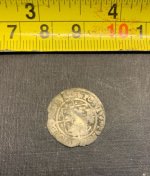Wint
Jr. Member
Hello everyone,
I had a question about spotting valuable mineral/metal bearing rocks (gold, silver, etc.). I see people throwing around Galena, and Chalcopyrite and such.
Is there a cheat sheet out there with pictures of what these potentially valuable stones look like in their natural state? ie, covered in years of weathering and such? I would love to keep my eyes peeled when I am out hiking, but I would be a liar if I said I had any clue what I was looking for.
I am not talking about all the pictures where folks are holding a chunk in their hand, I am talking about what this stuff looks like before it is even scratched, still in the boulder or rockface.
Any and all info is appreciated!
I had a question about spotting valuable mineral/metal bearing rocks (gold, silver, etc.). I see people throwing around Galena, and Chalcopyrite and such.
Is there a cheat sheet out there with pictures of what these potentially valuable stones look like in their natural state? ie, covered in years of weathering and such? I would love to keep my eyes peeled when I am out hiking, but I would be a liar if I said I had any clue what I was looking for.
I am not talking about all the pictures where folks are holding a chunk in their hand, I am talking about what this stuff looks like before it is even scratched, still in the boulder or rockface.
Any and all info is appreciated!





